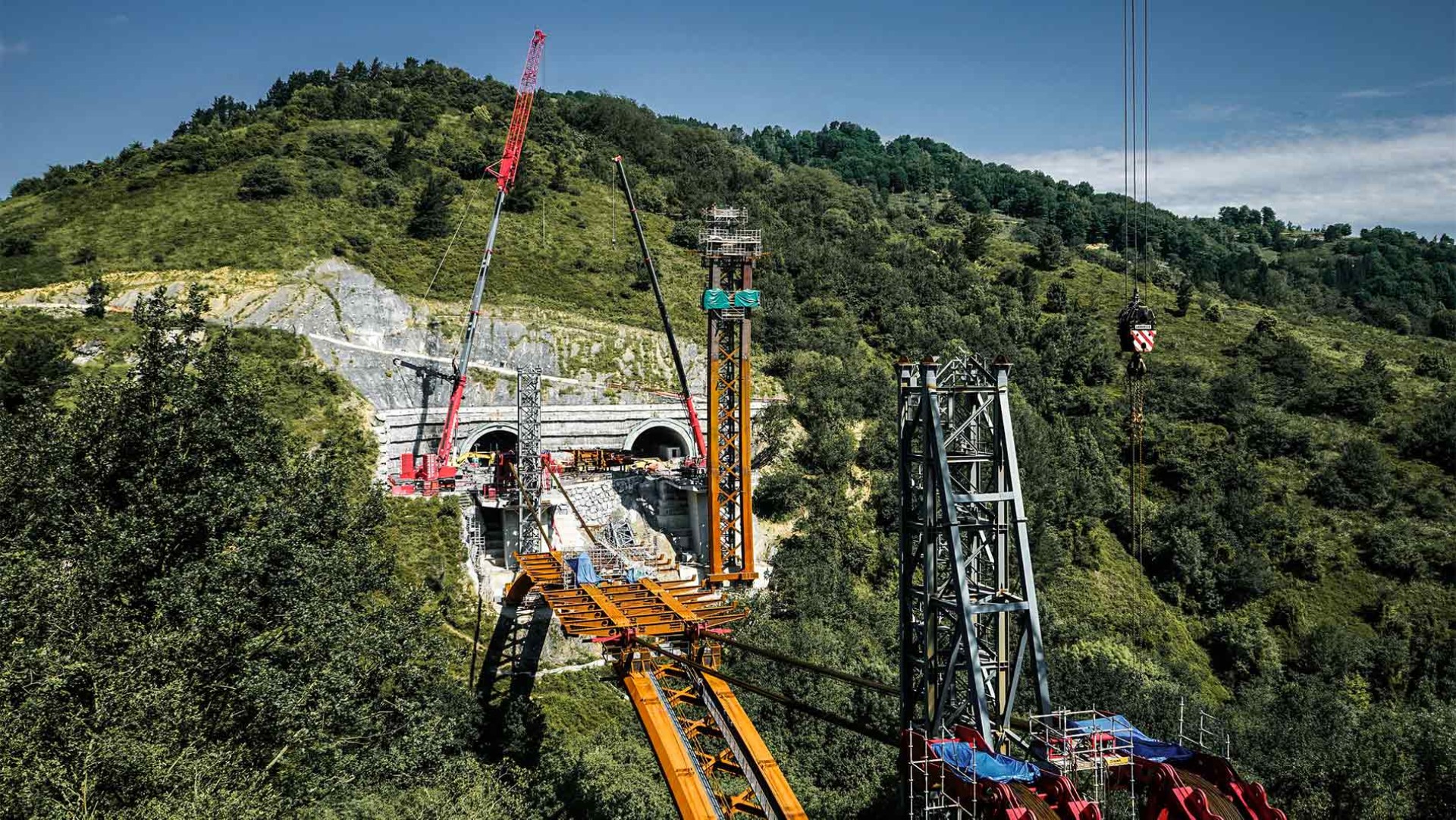
8 minutes - magazine 01 | 2023
Cranes protecting the environment
Along with a large number of other Liebherr cranes, our new LTM 1650-8.1 completed a very special job on behalf of Grúas Ibarrondo in northern Spain.
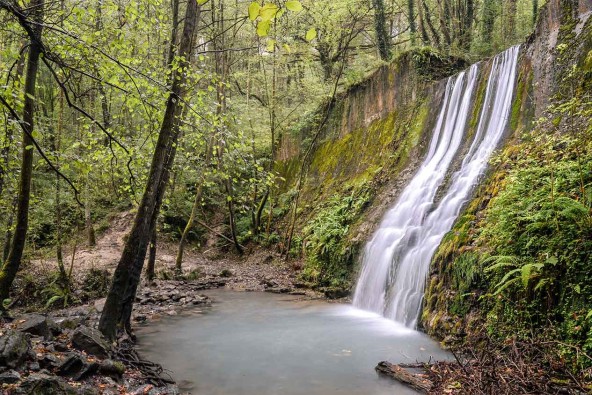
The Bolintxu Valley – an idyllic paradise with a rich variety of flora and fauna.
Twin viaduct constructed in the sky
A bridge measuring around 160 metres in length was installed over the Bolintxu Valley near Bilbao, which was absolutely untouched by the process. The challenge was that the valley has been a nature reserve for many years.
As a result of increasing traffic levels due to the growing port of Bilbao and the fact that these problems were creating frequent traffic jams on the ageing roads of the region, the regional Basque government commissioned a new relief road as part of its “Variant Sur Metropolitana de Bilbao” Project. In the future, the traffic moving from the coast to the French border will be directed onto this motorway so as to relieve the strain on the existing road, the A8. The final section of the new relief road, the AP-8 “Supersur”, passes through a highly complex geographical area. To connect the new 1,950 metre Arnotegi Tunnel with the 620 metre Seberetxe Tunnel on the opposite side, the Supersur has to cross a deep valley.
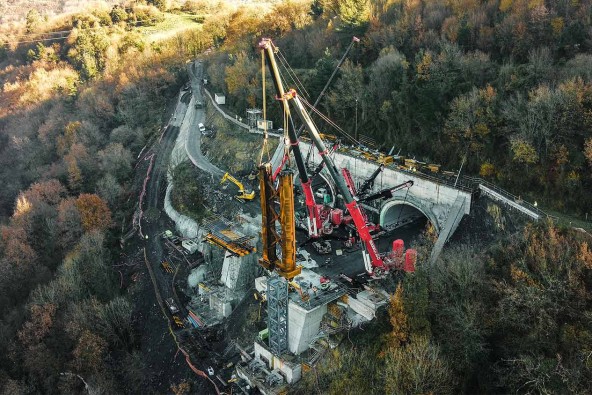
The job of erecting the semi-arches was carried out by multiple Liebherr cranes working together.
Bolintxu Valley – a natural paradise in northern Spain
The Bolintxu Valley is one of the last natural oases near Bilbao and is a valuable ecological asset. The idyllic valley, surrounded by mountainous terrain, is a small piece of paradise – with waterfalls and a rich variety of flora including ash trees, ferns and bushes and a river meandering through the valley bottom. This is home to tadpoles, newts, dragonflies and other species typically found in the area. The protection of these animals, and above all the European bison which is threatened with extinction, was given a very high level of importance during the planning phase for the new road. The valley is a nature reserve and had to be left completely untouched so as not to jeopardise the life of the bison. So the plan was to develop an architectural design which did not require any scaffold or support columns from the valley floor.
Twin viaduct for major relief road with no columns
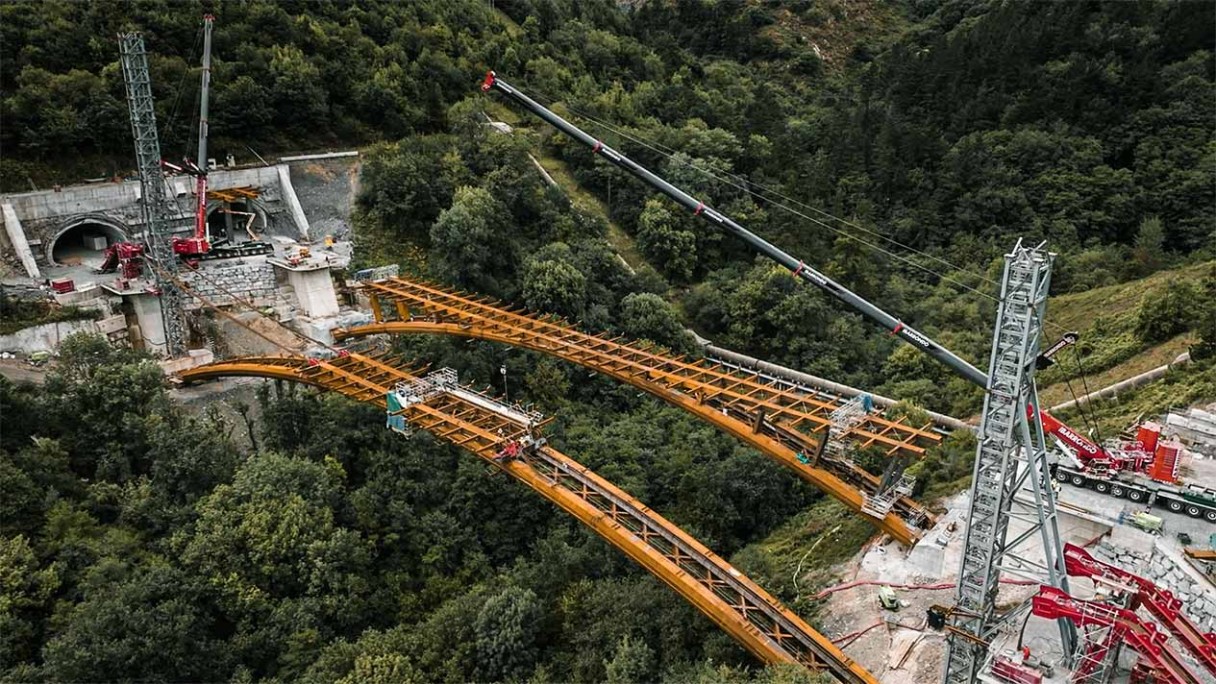
With its long boom, the LTM 1650-8.1 reaches over the valley with heavy steel components on its hook to hoist them precisely onto the viaduct.
The decision was made to use a design supported only by parapets on both sides – two viaducts each measuring around 160 metres in length, which together span the valley and deliver the two-lane road for the Supersur. But in addition to protecting the flora and fauna, there were other major challenges posed by this project – coordinating the work of different contractors proved to be extremely complex. The only access route to the site was through the tunnels. However, these also had to be rebuilt and used for other logistics processes within the project. The space between the tunnel openings and the bridge parapets was also extremely limited – and was located on a steep slope. This situation meant that some stringent planning and construction requirements were imposed which required a creative approach by the client Interbiak and the consulting engineers Arenas & Asociados. To ensure that the twin viaduct could be constructed efficiently and safely despite this complex situation, an innovative solution was selected involving a high level of technical complexity. This also enabled the natural surroundings of the valley to be taken into consideration.
For the construction of the viaducts, the semi-arches first had to be assembled from individual segments in a vertical position using a crane. To achieve this, the crane had to access the site through the tunnels and the extremely constricted space available on the banks which had been excavated in the mountain – none of which posed a problem for Grúas Ibarrondo’s powerful LTM 1650-8.1. “The LTM 1650-8.1 was a very good choice as VarioBase® and VarioBallast®, its lifting capacities and its boom length enable it to adapt to small spaces. All these key features were essential as a result of the limited space available at the site”, explained Mikel Ibarrondo, Managing Director of Ibarrondo.
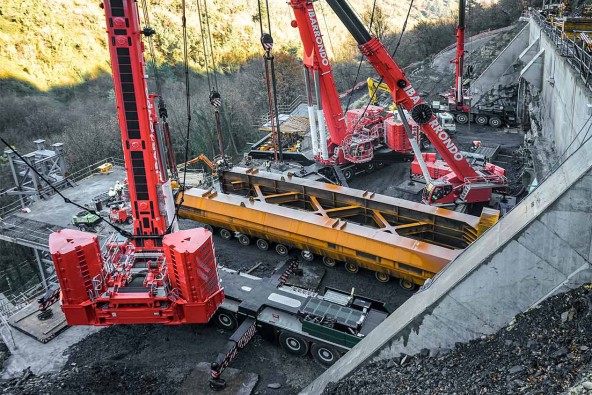
Bundled Liebherr power working together in a very constricted space.
The mobile, flexible Liebherr crane with its 700 tonne lifting capacity hoisted the elements for the metal semiarches vertically in sections from the platform to up to 70 metres into the air. The semi-arches were then slowly lowered over the Bolintxu gorge simultaneously from both sides using winches and then connected to each other in the centre.
Bundled Liebherr crane power
The next step was to prepare the road surface. The LTM 1650- 8.1 was once again required for this work. The substructure for the future road was placed in sections on the lowered, connected arch elements. Positioned on the abutments, the 8-axle crane hoisted the heavy steel segments for the road surface on to the viaducts. Initially set-up in the T3Y configuration, the power pack hoisted the 20 metre long, 7 meter wide semi-arches, which weighed in at 140 tonnes. For the centre section, composed of elements measuring 10 metres in length, 7 metres in width and weighing 35 tonnes, the crane was switched to the T5Y configuration so that it could reach to the centre of the viaduct. This meant that the boom had to operate with radii of up to 66 metres and weights of 10 tonnes to enable the heavy steel segments to be bolted into place safely. The LTM 1650-8.1 was supported throughout the job by an LTM 1300-6.1 acting as auxiliary crane. On the opposite side of the valley, another giant crane from Ibarrondo, an LTM 1750-9.1, was performing the same actions as the other two Liebherr cranes.
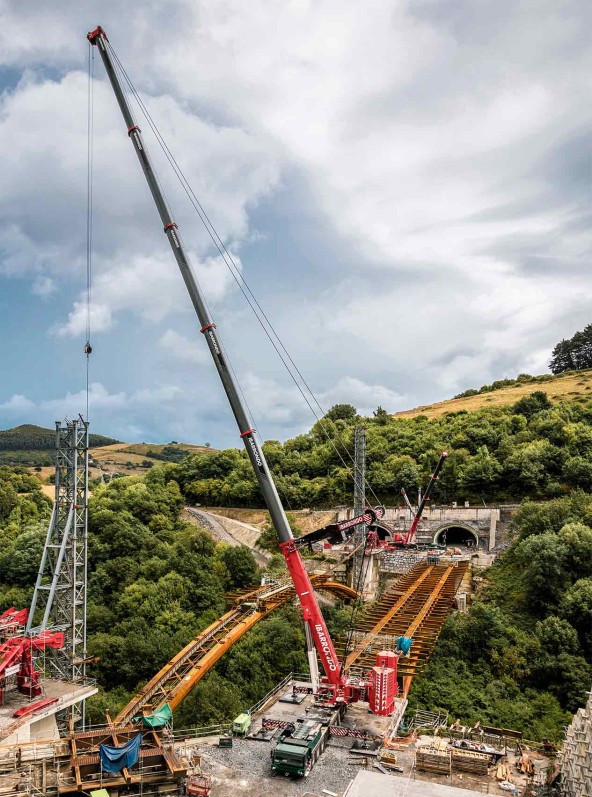
The large cranes produced fantastic performances on both sides.
LTM 1650-8.1 impresses throughout
“The decision to work on this project with Liebherr was primarily due to the LTM 1650-8.1. The 700 tonne crane is an impressive package with its functionality, manoeuvrability and performance with the long boom”, said Gregorio Elguezabel Eguskiza, Project Manager at Grúas Ibarrondo. In total, the installation work for each bridge took two to three days. “The crane was very easy to operate for this type of work. It delivers a whole host of options and always performs brilliantly”, added Carlos Barandiarán Eguía, crane operator at Grúas Ibarrondo. “The LTM 1650-8.1 is the most powerful 8-axle crane on the market. Even in constricted conditions, the crane can handle high lifting capacities – and can do so with either a 54 or an 80 metre telescopic boom. In addition, a wide range of jibs can be combined with it. That sets the crane clearly above any of its rivals”, said a delighted Eguskiza.
And Mother Nature was also delighted with the powerful crane – as it meant that intervention in the protected valley could be minimised. The Supersur will be completed over the next few months and will open to traffic for the first time in mid-2023.
This article was published in the UpLoad magazine 01 | 2023.



